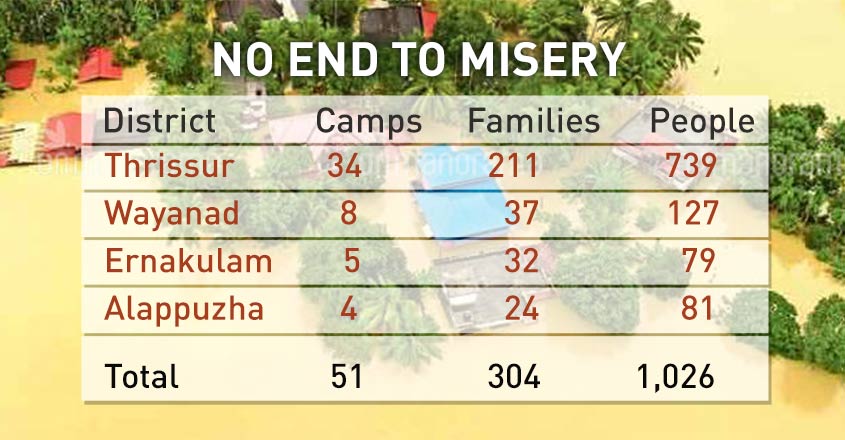Kozhikode: More than 100 days after the deluge, one of the biggest tragedies to have ravaged Kerala, over 1,000 people are still unable to return to safery of their homes. A total of 51 rehabilitation camps are still open in the state, according to the land revenue commissionerate officials. Out of them, 34 are in Thrissur alone, one of the worst-affected districts. Seven hundred and thirty nine people from 211 families are housed in the camps in Thrissur.
Since many of them do not have proper documents of land and houses, it would be impossible to find a replacement immediately, said State Disaster Management Authority head Shekhar Kuriakose.
“The people who are not able to leave the rehabilitation camps, are mostly those who do not have houses or people whose houses are no longer usable. Such issues can be dealt with only regionally. The chief minister held a detailed meeting with the district collectors on Tuesday and we are looking into the issues that are region specific. In some cases, people have been living in 'poramboke' and whose rehabilitation can not be carried out immediately. Legitimately, they do not deserve compensation or a new house, but considering their helplessness, the government is looking at options to find land for them. That needs time, especially in a state like Kerala, where the availability of land is less,” said Kuriakose.
The official added that the list of people, who can not be rehabilitated immediately, due to the 'poramboke' issues, would be detailed by Chief Minister Pinarayi Vijayan in the Assembly on Thursday.
Need of the hour
Sr Maratha, founder of Snehasagar, a trust that had been carrying out rehabilitation works in Alappuzha and Ernakulam, said that what the inmates need immediately was housing. “Their food, clothes and even medicines are being taken care of by trusts and volunteers like us. However, these people need proper housing. They can not go back to the cracked houses; for some, the houses do not even exist. Government should immediately intervene to help such unfortunate people,” she said.
In the case of Wayanad, reconstruction of houses have become almost impossible in many of the flood-affected areas, forcing the homeless to seek housing elsewhere. Close to 20 per cent of the land only is available for construction of building due to the forest and cultivated area. The flood has caused severe damage in the rest of the land and construction is almost impossible there. The dwellers will either have to risk their lives or move to other areas, added the officials.




















